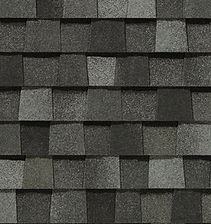How to Improve Gutter Flow and Prevent Clogs: A Guide for Homeowners
- Staff
- Jun 27
- 3 min read
When it comes to protecting your home from water damage, your gutter system plays a critical role. But many homes have setups that are either outdated, undersized, or poorly laid out. Before making any upgrades or improvements, take a few minutes to evaluate your current system. Where is the water flowing during a heavy rain? Do you notice overflow in certain areas? Is one downspout bearing the brunt of the work? A quick visual inspection can help you determine whether your system is optimized or needs adjustments.

Below are several effective ways to improve water flow and minimize the risk of clogs and backups in your gutter system.
1. Arrange downspouts in optimal locations
Sometimes a single section of gutter handles more roof surface area than it should. In these cases, one downspout may not be enough to handle the water volume. By adding or relocating downspouts to areas with better drainage or more capacity, you can significantly improve your system’s performance. Consider where water is pooling or overflowing—those are often the spots that need the most attention.

2. Add kickers (extensions) to downspouts
Directing water away from your foundation is just as important as getting it off the roof. Without kickers or extensions, water can collect near your home’s base, leading to potential foundation issues or basement leaks. Adding angled kickers or flexible extensions at the bottom of your downspouts ensures that the water gets far enough away to prevent problems.
3. Upgrade to 6" gutters and 3x4 downspouts
Many homes still have the standard 5" gutters and 2x3 downspouts, which may not be sufficient for handling heavy rain, especially on larger or steeper roofs. Upgrading to 6" gutters and larger 3x4 downspouts allows for more water to flow through the system with less chance of clogging. You don’t always have to replace the entire system—sometimes just upgrading one high-volume side of the house makes a noticeable difference.

4. Install leaf guards
Leaves and debris are a leading cause of clogged gutters. Installing guards can dramatically cut down on maintenance and reduce the chances of overflow.
Mesh screens: Inexpensive and easy to install. Good for homes with minimal tree cover. Price range: $
Micro-mesh covers: Fine mesh that even blocks pine needles. Great for heavily wooded areas. Price range: $$–$$$
Reverse curve guards: Designed to let water in while leaves slide off. Effective but can be bulky and more visible. Price range: $$$
Foam inserts: Easy DIY option that sits inside the gutter. Blocks debris while allowing water to flow. Needs occasional cleaning. Price range: $

The best choice depends on the types of trees near your home and how often you want to clean the gutters.
Bonus Tip: Think about color
When replacing or upgrading gutters and downspouts, consider more than just function—think about aesthetics too. You’re not limited to basic white. Gutters and downspouts come in a wide range of colors to match or complement your siding, trim, shutters, or roofing. A well-coordinated system can enhance your home’s curb appeal while still protecting it from water damage.

Need help upgrading your gutter system?
JP Construction Services has been helping Maryland and Pennsylvania homeowners design, upgrade, and maintain effective gutter systems simce 2005. Whether you need a simple fix or a full system replacement, we can help you choose the right solution for your home.
If you live within our service area, call us today at (877) 846-9566 or fill out the form below to get started. Or, if your house was affected by a recent hail or wind storm, you can schedule your free inspection online.






















